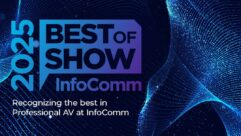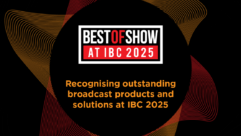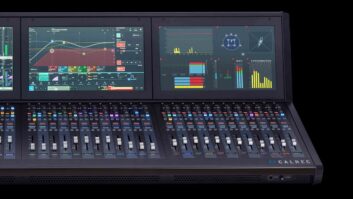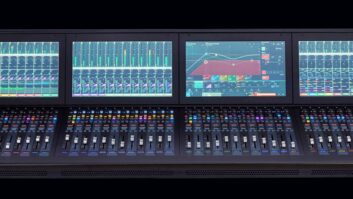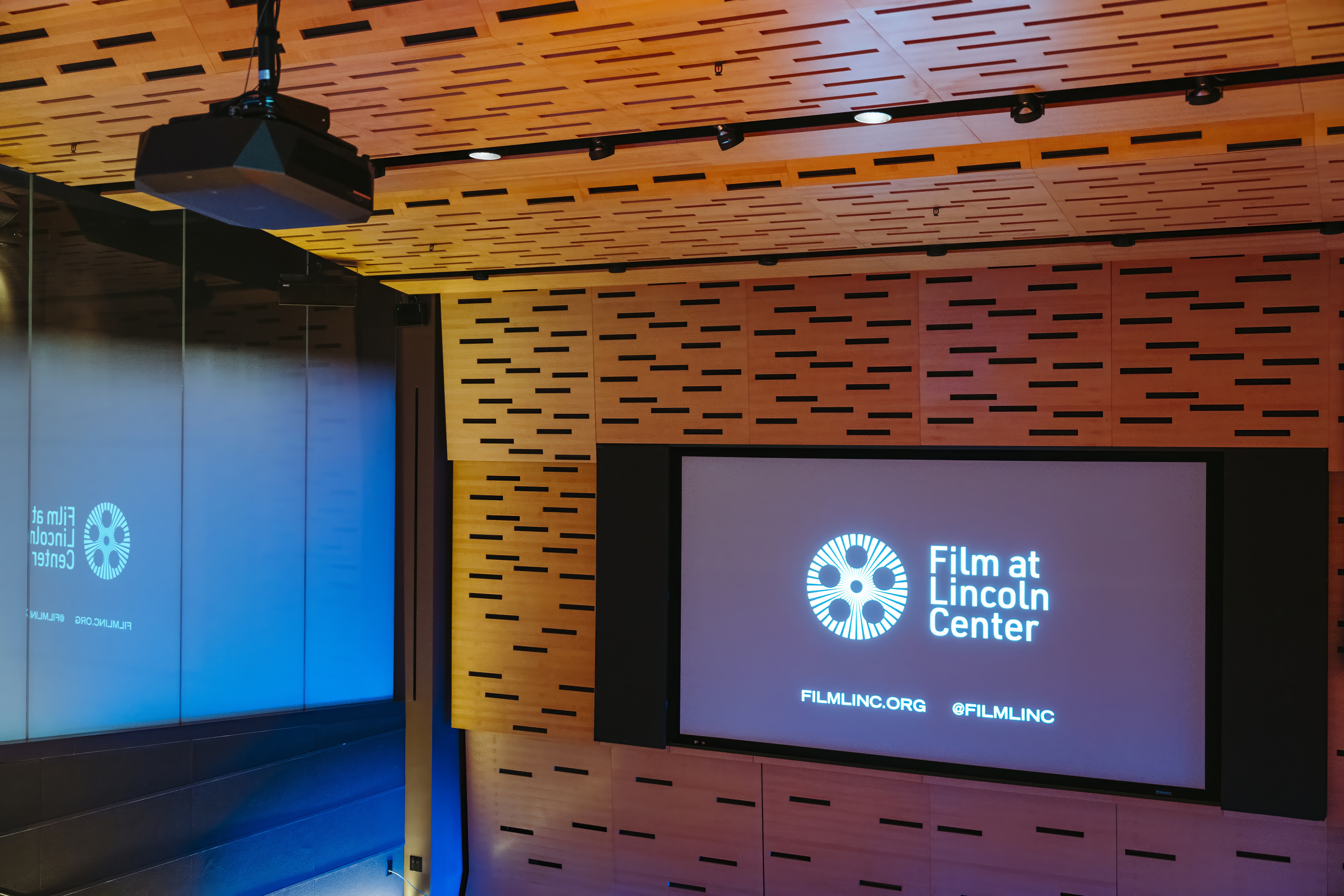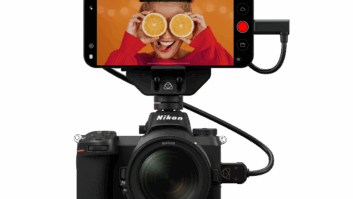
Adam Yates, project sales engineer at the Nisewonger Audio Visual Center in Lawrenceville, Georgia talks about the installation of an all new Visix digital signage and AV collaboration system for the Hall County School District. In this interview, Yates details the Visix AxisTV digital signage system, the installation of LG displays, and the user training Nisewonger AV provided. Beyond that, the school wanted to add visual collaboration tools, which translated to Mersive Solstice and Cloud Electronics.
SVC: First tell us about Nisewonger AV. You’ve been around for a good while so how did it all get started?
Adam Yates: We are a family owned and operated company. My wife’s grandfather, Jim Nisewonger, started the company back in 1968, so last year we celebrated our 50th anniversary. Fifty years as a small business in the educational AV space is pretty awesome, so we’re very blessed. I would say we’re second/third generation right now. Jim’s son Randy is our President and CEO and my wife, Ashley, and I help run the business. She’s more on the operations side and I’m more focused on the sales and business development side. So we really started out as humble beginnings. We started in the basement of their home and [Laughs] now we’ve advanced. We’ve got an office here in Lawrenceville, we’ve got 10 employees and really the basis of our company is based around service.
1968! Your outfit has been around long enough to have seen a lot of AV technology come and go.
We sure have. I’ve got an old catalog here that we pulled out of storage about a year ago and it’s – I think it’s from about 1978 – and we’ve got reel-to-reel projectors and the old, old equipment that they used to use in schools. So that was kind of a museum of technology that we were able to flip through and say this was our company circa 1978.
And it looks like you focus primarily on education.
We do, yeah. We have maintained that and we’ve stayed rather small. We’re just here in the state of Georgia, and really our main focus is that K-12 education market. That market has been very good for us, been very good to us, and really comprises probably 85-90 percent of our business. It’s an interesting market and the technology is changing very rapidly, even in the K-12 market which is surprising to some people.
Hall County School System is right in your neighborhood, around beautiful Lake Lanier. They’ve got something like 20 elementary schools, 7 middle schools, 7 high schools. That’s a lot of ground to cover.
That’s right. Hall County Schools has roughly 27,000 to 28,000 students. It’s a growing district, really starting to expand. We do a lot of work for them, from AV for classrooms to media center and café spaces. We do furniture design layouts for them, renovating these spaces and focusing in on how we can integrate the furniture with the technology together. When they came to us for digital signage, they really wanted a digital messaging interface that acted as a central messaging platform for the district and for the schools. We went directly to Visix as their enterprise-level solution, their AxisTV, was just a natural fit for that particular application.
And Visix is in your neighborhood, too. I think they’re headquartered in Norcross.
They are. That’s right, about 15 miles away. That’s really come in handy because we’ve been able to invite people from Visix directly to Hall County to talk through things and we’ve been able to meet as the projects have come along. We have over 300 players now throughout the district; pretty much every school now has the digital signage platform and they’re running it on a day-to-day basis. People have come to really rely on this method of communication.
They had been using various other kinds of systems and all the schools weren’t on the same page.
They had a couple of different versions of their previous system and it really wasn’t focused on digital signage. They were using some IPTV-type solutions; a conglomeration of a couple of different solutions. So when we decided to go this direction with Visix, they were ecstatic to get something in place that could be controlled at the district level, but then pushed down to each individual school. I hope I get the opportunity to discuss how they’ve done it with other districts. It’s unique in that it’s centralized, but it’s given each school some autonomy within the framework of the digital signage platform. We worked with Visix to create some templates for the schools. So they have some standardized templates that they can use, but within that they’ve got some customized background and layouts, and some custom content. So each individual school has some uniqueness about it where they’ve got their logo, their colors, their kind of style sheet within it. However, if you go from school to school to school you see some continuity there. If you look up at their screens in the front office you know from school to school that it’s the same platform.
For security and so forth they’ve got different user authorizations set up on that.
That’s right. They use Active Directory for their user information and then what they can do—which they absolutely love—is they can give certain faculty and staff members different user access to the Visix digital signage platform software. So say so-and-so in the front office, maybe he or she just needs to be able to send a simple message out. The other more complex capabilities may be taken away from that user because that’s all they need to do. Or say the media specialist, for instance, they’re somewhat in charge of the Visix system. They may have additional user access. And then the great thing about this enterprise-level system is the district can push down content to the schools and also give the schools some independent access to that content and communication.
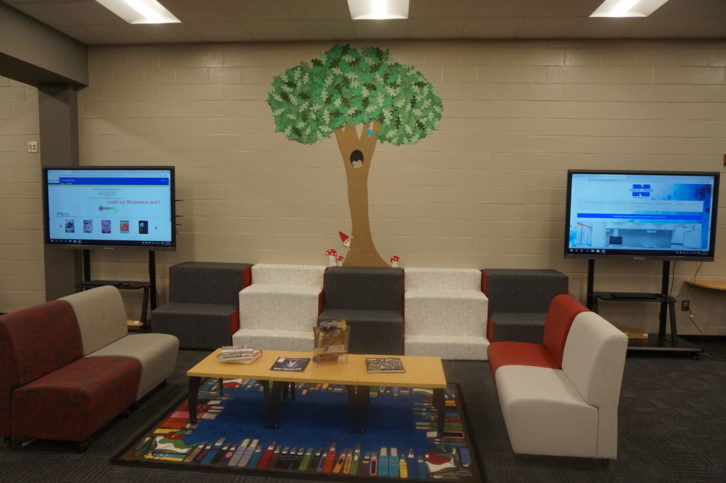 Hardware-wise, you already had network, power and cabling in place so that sure would have sped up things for putting in the LG displays.
Hardware-wise, you already had network, power and cabling in place so that sure would have sped up things for putting in the LG displays.
Yes. We had the network data guys come in and pull the data to that particular location. So those locations were tagged as spots for digital signage within the schools and then power and data was pulled to those spots. So when we came in we would install the display, install the player behind the actual display, and connect it HDMI to each display, and then connect it via an RJ45 CAT6 cable to the data drop. At that point it was able to implement on their network. Prior to that we coordinated with Hall County, got IP addresses and all the necessary network information and preprogrammed each of these players before we went onsite. So by the time they were installed, connected to the network, they were ready to be implemented on the server and they could be up and running in 30 minutes.
And what are the hardware players that you have on each of the LG displays?
The hardware player is the Visix digital signage player which is a full Windows-based PC. So it’s a solid state drive-type player, and we feel very confident that it can handle video content and a lot of different content.
You used Crimson AV T63A mounts so nothing fancy, just dependable, adjustable, just what you need.
Yes, just what we needed. Yeah, they’re fantastic. We’ve had a great ongoing relationship with Crimson AV. They supply probably 90 percent of our projector and television mounts that we install.
What makes K-12 such a dynamic market? Are they just getting going with these kinds of systems now?
It’s changed so much just in the past two to three years. We’ve seen a huge shift and it’s not just about the classroom—it’s so beyond that. We do a lot of work in their café spaces, gymnasiums, auditoriums, training rooms, meeting spaces, conference rooms, and then these other non-traditional classroom spaces like broadcast video, culinary, engineering labs, business ed labs. That’s where the technology has become so dynamic in the education environment because now you have all these different spaces that aren’t just going to get the typical whiteboard on the wall with the short-throw projector. They require different and more engaging technology.
When you came in and put all these displays up, did you have to do all this hardware installation while classes were in session?
Phase I, which was last year, came in two parts. We did some before school got out and then we did some over the summer so it was a little bit mixed. Most of those displays that we were doing during school, they were being installed in hallways and café spaces, kind of front entry areas, media centers, so most of that was able to be done during the school day without really interrupting anything. For instance, in a café space, we would just need to coordinate with the school and make sure we weren’t in there during lunchtime.
In addition to signage, the schools also wanted a collaboration solution. Where did you go with that?
Really it started out as collaboration for typically a learning commons or media center space. Not necessarily in the classroom but in those commons areas of the school system. They wanted a system that was easy to use that could work across all platforms and different types of devices. The key was multiple students sharing information at the same time on the same display, where you had small groups of individuals coming together working on a project together.
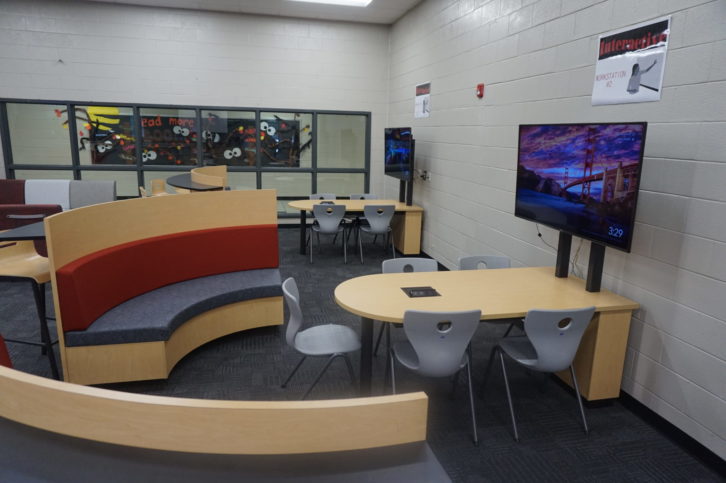 Why did you decide to use the Solstice wireless collaboration system from Mersive?
Why did you decide to use the Solstice wireless collaboration system from Mersive?
We created a relationship with the Mersive guys many years ago. They were – I don’t want to say they were the first to market, but they were in pretty quickly on in this idea of collaboration huddle spaces. And we really took our time with specifying this. We kind of scoured the marketplace for the best solution that really offered the most user-friendly interface and the network connectivity. We were careful not to jump in on the cheapest solution just because it’s K-12. We just wanted to make sure that we had a great solution that would work in many different environments with many different devices, and the Solstice achieves that.
And of course you’ve got to have scalability because the student body in these schools is getting bigger so you’ve got to look at expansion.
Yeah, absolutely. The great thing about these wireless devices is they sit on the network and they allow multiple students to connect with multiple devices at the same time and they allow students to jump in and out of those connections. As the class size increases or changes, they can be very flexible.
This probably gets the students engaged and motivated.
Yeah, absolutely. And that was really the requirement. We started seeing the need and the desire for more small group work. Something where you can have multiple devices on the screen at the same time – you can resize windows and you can zoom into a specific area and things like that – really made a lot of sense for that type of work.
You also installed Cloud Electronics systems, how do those work?
Cloud Electronics are a European-based manufacturer of audio solutions equipment. We utilize their equipment in our AV designs most specifically for room audio zoning. So that means is if you’re looking at a learning commons, we may have the need for a two to three zone audio system. For example, we might have a specific zone in a classroom where the instructor may need to play audio from a laptop or use a microphone in that area. And then in another zone of the media center, there might be a hangout area that just needs some background music. And then you have another area that may be a small group space where a student needs to connect their device and play a video presentation. So those products allow us to be able to create different zones within one single space.
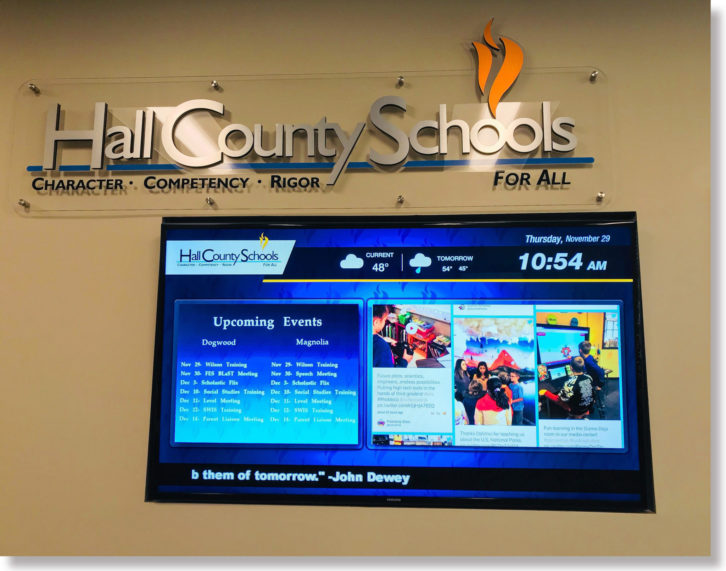
And how is that controlled?
Typically from an audio controller on the wall. Each zone may have a little button controller that you select the source and you can adjust the volume for that particular source in that particular zone. So it’s very simple. It’s very easy to use. You walk up to that zone, you select your source, whether it be Bluetooth audio or whether it be from your laptop or whatever, and then you can adjust the volume of that particular zone.
What about the Clear Touch interactive panels?
Right now, Hall County has roughly 20-25 of these interactive panels throughout the district. Typically we were putting them in these learning commons spaces/media centers, as we’re renovating those. Most of the time they’re going on mobile carts which allows the students, faculty, the media center specialists, to create any kind of small group environment and have an interactive panel. The panels come built in with an Android OS and then an option to add a PC module in. Most of Hall County have the built-in PC module that has an i5 processor. It comes with a full software suite that includes some educational software as well as some white-boarding tools and things like that.
I would think that you provided some instruction on all these things to the faculty and media specialists.
Yeah, absolutely. That’s really part of what we do and who we are. We have a dedicated person that takes care of any kind of technical issue that arises. He takes care of our training and our programming. When we put in these systems, we set up a training session for the main users or we do a train-the-trainer type session and go over exactly how to operate that system.
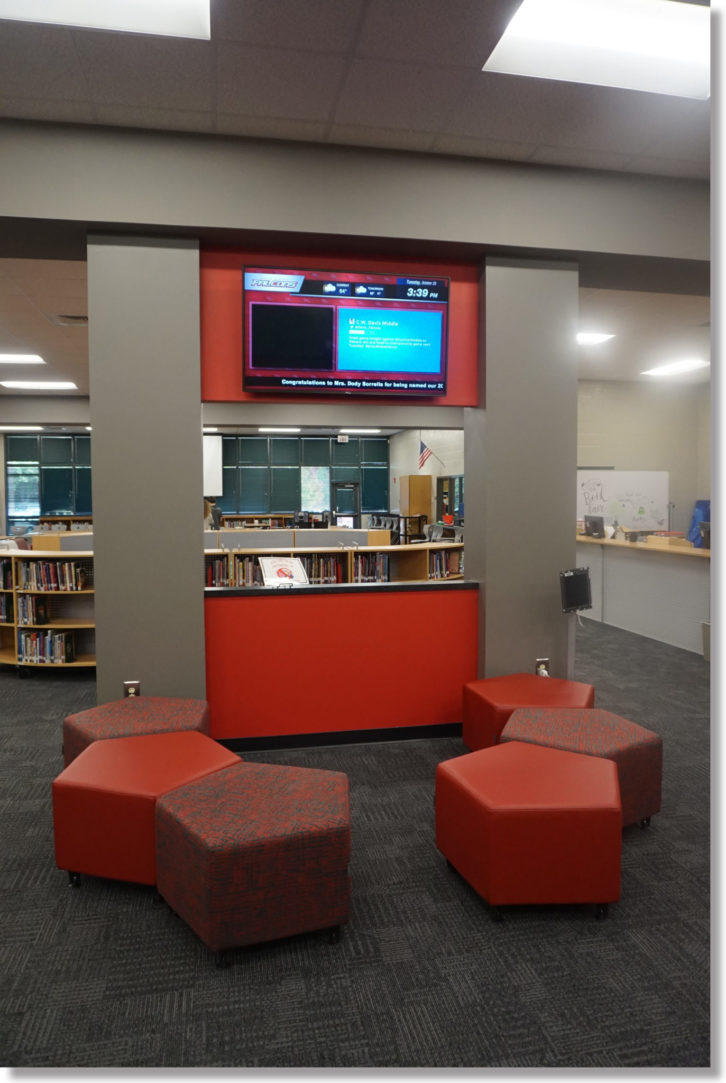 What’s the learning curve been like? Have they picked up on it pretty quickly?
What’s the learning curve been like? Have they picked up on it pretty quickly?
Yeah, you know they really have. With Visix it was pretty impressive. They were able to pick up on the software side of it and learn pretty quickly. We did some training with them with Visix and brought in the media specialist of each school because they’re really the ones in charge of the digital signage platform and posting content and things like that. They were already used to another IPTV type solution already and so they had a little bit of knowledge to start from. As far as the other systems that we implement, we try to make it really as simple for the user as possible. And typically, the more simple user interface requires more complexity on the back end.
There was projector installation also involved in this since they’re still the lowcost solution to very large displays.
Correct. Hall County specified Epson as their projector of choice, and so typically we were installing those in these leaning commons spaces. But we’re not only designing and implementing the AV system for those spaces, but we’re also designing the furniture interior design layout. We’ve done this for now six different learning commons spaces in Hall County–where we actually come in and we completely design the space and furniture layout. We get with the administrators, and get their vision for the space and how they see it being utilized, and then we come in and integrate the technology and the furniture into the different collaboration zones. We can then design our AV system around that because now we know the layout—we know that this is a teaching area, this is a reading area, this is a small group area.
Were there any specific things you did to futureproof all of this stuff as much as possible?
We try to think about that. As we do any kind of design work, and as we’re implementing different technology, we’ve always tried to stay on that cutting edge of technology in the education space and try to think ahead. I remember four or five years back I think we were one of the only integrators out there with an interactive panel at that time. It was kind of new in education and everybody looked at it and said, “I don’t know about that.” Now it’s becoming the most common piece of technology that’s going in the classroom today. So our job is to stay ahead of the curve on the technology that schools are using. Another example of that is moving to an HDBaseT infrastructure. Most of the systems that we do for cafes, gymnasiums, and auditoriums we’re sending signal and in most cases it’s via HDBaseT which carries power, video and control over one single cable. Maybe they don’t need the full capability of an HDBaseT system right now, but they might in a couple of years and the it will already be there for them.
I guess you’ve got plans for what you’re going to do after Hall County schools are taken care of.
Yes, absolutely. We’ve got some very exciting projects in the works. We just completed a 2×6 video wall for Fulton County schools, for their Emergency Operations Center. They keep up with weather and different security alerts and things like that. We were able to put in a Just Add Power AV over IP based switching system there where we’ve got over 20 sources and a vast array of switching capabilities. They have a very powerful system, incredibly powerful. And then we just designed and are getting ready to install a 3×3 video wall for a charter school system, their regional office. That’s going to be an interesting project. It’s a 3×3 video wall that’s really going to operate like one large video screen and it’s going to be using LG displays and Just Add Power AV over IP based technology. It’s going to be awesome.


